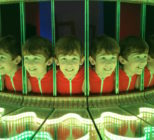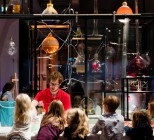The museum says the name change to National Science and Media Museum better reflects its focus on the science behind the magic of photography, film and television.
The museum believes that changing its name to the National Science and Media Museum makes it clear what people can expect when they visit. The move is the start of the museum’s long-term strategy to look at its core subjects differently and inspire the filmmakers, photographers, scientists and engineers of the future.
Jo Quinton-Tulloch, Museum Director, said the announcements are a significant statement of the organisation’s intent to be one of the leading museums in the UK and worldwide. “The museum has a bright future and we are confident people are going to be wowed by Wonderlab and the state-of-the-art exhibits within, along with many other events we have planned like the arrival of Tim Peake’s spacecraft.”
The new Wonderlab gallery opens with a family weekend on the 25 and 26 March and explores the science of light, sound and images through interactive exhibits – some of which can’t be seen permanently anywhere else in the world. Last year sister organisation the Science Museum opened the first Wonderlab, which has been a huge hit with families and school groups.
Visitors will be able to see their body split from their head as they walk, hear their voice echo through a 15m-long tube, experience an anti-gravity mirror and a musical laser tunnel, as well as watch one of the world’s first 3D-printed Zoetrope installations.
The museum has also confirmed it will host the world-famous Soyuz TMA-19M spacecraft that carried Major Tim Peake to the International Space Station (ISS) and back to earth. Visitors will be able to see the space-faring vessel this September when it travels outside London for the first time since it was acquired by the Science Museum Group in 2016.
“We want to draw in new visitors, encourage existing ones to come more often and open a whole new chapter for the museum,” said Quinton-Tulloch. “Our collections across the technology and culture of photography, film and TV are unrivalled, and Wonderlab explores the science behind what makes these things magical in a very hands-on way.”
Wonderlab consists of 20 permanent exhibits including:
UK’s first permanent ‘Time Twister’ screen, which separates head from body
A waterfall that visitors appear to make hover in mid-air with their hands
The world’s first permanent 3D-printed zoetrope by Japanese artist, Akinori Goto
A 6ft sphere with spectacular animations of the sun and earth
Self-portrait photos timed to the exact moment a water drop splashes
A musical laser tunnel designed by Bradford-based artists Steve Manthorp and Shanaz Gulzar










